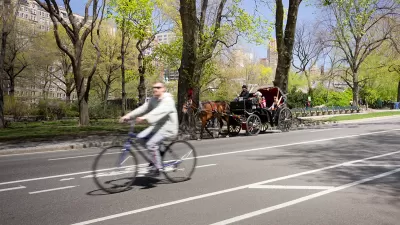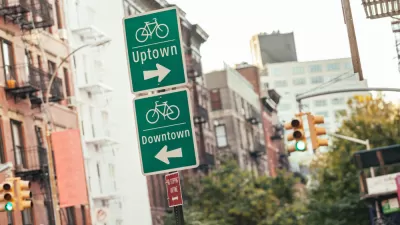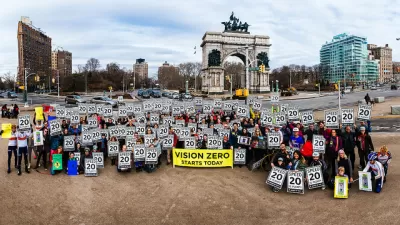The New York City Council is expected to pass a "Streets Master Plan" this week that City Council Speaker Corey Johnson describes as designed to "break the car culture."

"Mayor Bill de Blasio says he now supports a City Council proposal to drastically reshape streets in favor of cyclists, bus riders, and pedestrians—provided, that is, the project's ambitious benchmarks don't kick in until after he leaves office," reports Jake Offenhartz.
City Council Speaker Corey Johnson first proposed the "Streets Master Plan" shortly after taking the leading role in council, and proposed official legislation for the plan in May. The Streets Master Plan, "would require the city to build 250 miles of protected bike lanes and 150 miles of dedicated bus lanes over a five-year period, among a slew of other street-level commitments," according to Offenhartz, and is expected to be approved by the City Council this week.
"The mayor had previously declined to support the legislation, expressing reservations about balancing the needs of communities, while touting his own Vision Zero plan as sufficient," according to Offenhartz.
Emma G. Fitzsimmons first reported the news of the compromise between the mayor and the council that cleared the way for the legislation to pass in the New York Times.
Add this $1.7 billion plan to the recent effort to block cars from 14th Avenue to make room for buses, a forthcoming congestion pricing scheme, and the mayor's own "Green Wave" plan, and New York City is heading toward some very tangible changes in how it manages its traffic flows.
Yet another article published today by the New York Times, written by Corey Kilgannon, explains more about the tragic history motivating the politics of the traffic safety push in New York City.
FULL STORY: De Blasio Supports 'Transformative' Safe Streets Plan, Just Not On His Watch

Alabama: Trump Terminates Settlements for Black Communities Harmed By Raw Sewage
Trump deemed the landmark civil rights agreement “illegal DEI and environmental justice policy.”

Planetizen Federal Action Tracker
A weekly monitor of how Trump’s orders and actions are impacting planners and planning in America.

Why Should We Subsidize Public Transportation?
Many public transit agencies face financial stress due to rising costs, declining fare revenue, and declining subsidies. Transit advocates must provide a strong business case for increasing public transit funding.

Understanding Road Diets
An explainer from Momentum highlights the advantages of reducing vehicle lanes in favor of more bike, transit, and pedestrian infrastructure.

New California Law Regulates Warehouse Pollution
A new law tightens building and emissions regulations for large distribution warehouses to mitigate air pollution and traffic in surrounding communities.

Phoenix Announces Opening Date for Light Rail Extension
The South Central extension will connect South Phoenix to downtown and other major hubs starting on June 7.
Urban Design for Planners 1: Software Tools
This six-course series explores essential urban design concepts using open source software and equips planners with the tools they need to participate fully in the urban design process.
Planning for Universal Design
Learn the tools for implementing Universal Design in planning regulations.
Caltrans
Smith Gee Studio
Institute for Housing and Urban Development Studies (IHS)
City of Grandview
Harvard GSD Executive Education
Toledo-Lucas County Plan Commissions
Salt Lake City
NYU Wagner Graduate School of Public Service





























